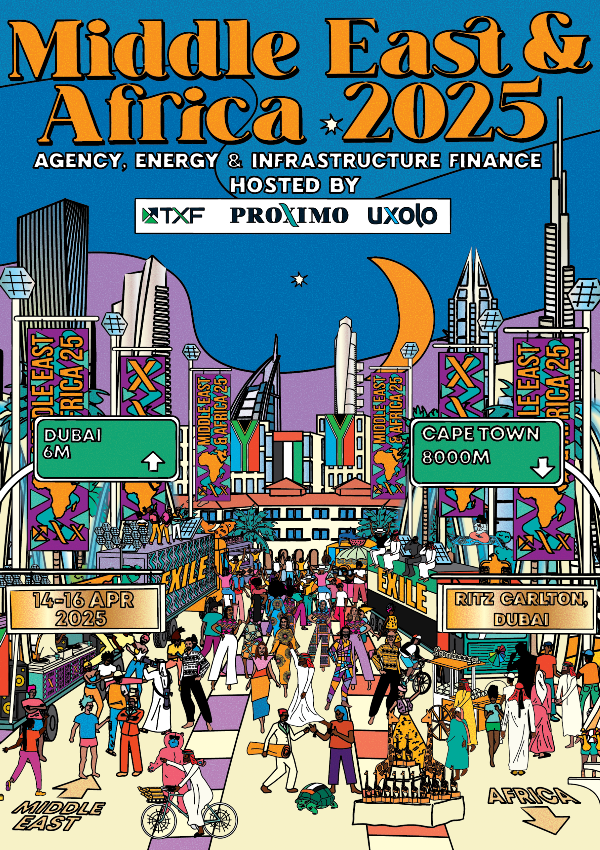Talking trade tech
TXF catches up with Kitt Carswell, vice president, senior offering manager, trade and supply chain, at CGI, a global information technology consulting company, to reflect on trade tech market themes for 2018.

TXF: We last spoke at Sibos 2017 in Toronto. Three months later, what do you think were the most important themes that came out of the conference?

Kitt Carswell (KC): The digital transformation theme stood out as most important since it crosses so many boundaries and holds such great promise. By becoming part of customers’ digital journeys or by applying intelligent process automation to internal operations, digital transformation is going to usher in the next generation of trade finance.
On the blockchain front, banks are moving past proofs of concepts (POCs) and going forward with pilots on the road to commercialization.
Banks continue to stay engaged with large consortia, but they also understand the need to form and/or join small consortia or coalitions. This shift is due largely because they have realized they need to get their ideas to market faster to stay at the forefront of change and, hopefully, a step ahead of their competition.
There is a recognition that banks need to progress their digital journey and they need to ‘ramp up’ to stay competitive or lose out to other banks. Their competitors have understood the potential and significant cost savings associated with leveraging emerging technologies, such as intelligent process automation (IPA), and are making great strides to lead the pack.
Banks will continue to work closely with the growing number of FinTechs offering specialized emerging solutions and services in this evolving ecosystem so that they can cut development time and expense. This will allow for the rapid development, deployment, and promotion of new products and services, which will delight and surprise their customers.
TXF: How does CGI plug into those themes?
KC: CGI has suggested that banks need to ‘ramp up’ and ‘plug in’ to stay competitive. We understand the power of blockchain and IPA to streamline work processes and reduce the labour needed for outdated tasks and activities associated with processing trade finance transactions.
We have set up the CGI Trade Innovation Lab to provide CGI’s Trade360 client banks a place to design, model, develop and test emerging technologies alongside selected FinTech partners. We are leveraging CGI’s global delivery capabilities in order to rapidly scope and scale projects. We believe the CGI Trade Innovation Lab provides that place outside the bank where organizational and management structures do not confine or limit the thinking or approach. It is a great way for the banks’ internal teams to get their hands [on] and heads around the new technologies developing. It’s the best first step towards change management, which is to communicate multiple times in multiple ways that change is coming and to get bank staff talking and thinking about what the change will mean to the bank, their department, teams and their own role in the future.
TXF: Interoperability is going to be a major part of trade finance innovation - what has CGI been doing in this area?
KC: Within the CGI Trade Innovation Lab, we understand the importance of interoperability with trade relevant blockchain applications. Our recent project with Skuchain demonstrated how LC issuing banks and advising banks processing on the CGI Trade360 platform can be seamlessly woven into the trading partners’ workflow, driven by their sales agreement and expressed as a “smart contract.” API integration allows for a holistic and seamless interaction between Skuchain’s Brackets production-ready platform and CGI’s Trade360 global trade platform (see Press Release issued on October 16, 2017). Our next efforts will focus on building on this POC to move towards commercialization.
TXF: What technological development will have the most tangible impact on trade finance the soonest?
KC: The industry will need to keep progressing proofs of concepts (POCs) and steadily improve customer-facing and back office processes. Also, the precursor to blockchain/DLTs is the work being done related to digital identity and to the overall digitalization of paper documents along the entire supply chain and trade finance ecosystem, including parties such as customs, freight forwarders, etc.
It will be necessary to have these in place before blockchain/DLT can reach a tipping point and gain mass adoption and thereby have a tangible impact on trade finance. More specifically, as things progress over the next one to two years, it will be the set-up and invitation to ‘permissioned’ networks, and ‘networks within networks,’ that will bring the largest and most profound shift to the industry. These developing trends highlight the need to foster what could be thought of as a ‘hyper-personal relationship’ with the customer or client. Some banks have already plugged into this and are leveraging existing applications of artificial intelligence (AI), such as chatbots and IoT sensors. For example, consider how sensor hardware can deliver near real-time information about the interior temperature of a cargo freighter via a blockchain mechanism allowing bankers and insurers to adjust fees and premiums through smart contracting software.
Added advancements related to Intelligent Process Automation (IPA) will be important for banks as they look to digitize their internal operation with intelligent data capture, robotic process automation, natural language processing and generation, artificial intelligence and data analytics. In many ways, trade is the hard nut to crack, especially for intelligent data capture, due to the nature of the documents involved and the high requirements for accuracy. Application of these emerging technologies will continue to move forward as banks invest in this area and the technologies mature.
TXF: How do you see the conversation about trade finance changing in the coming year or two?
KC: Over the next 12-18 months, it looks like the banks’ ability to gather a lot more information about a particular customer or client will afford enhanced know your customer (KYC) and anti-money laundering (AML) assessments, but it will also accentuate the customer or clients’ desire for the bank to deliver a much more customized and personalized approach to their business and its particular needs or circumstances. This will be the new front line of competition by and between banks and FinTechs. Application of advanced technologies will allow them to better meet the needs of current and potential customers with innovative products and services while also creating a more efficient overall process. The industry will see new hybrid or blended products emerge and old product offerings will wane or become obsolete. Banks will have to find new ways to blend their core services of guarantees and financing into their customer’s digital workflows and deliver them at the speed of ecommerce.





